Charlie Kaufman has never been the kind of filmmaker to hand you easy answers. If Eternal Sunshine of the Spotless Mind was his bittersweet take on love and memory, then I’m Thinking of Ending Things is his deep dive into regret, identity and loneliness. Based on Iain Reid’s novel, the film doesn’t just play with time and perspective, it also flat out bends them until your brain feels like it’s in a snow globe.
The story starts simple enough, where a woman travels with her boyfriend Jake to meet his parents. But what begins as a road trip quickly spirals into something stranger, sadder and much harder to pin down. By the time the credits roll, you’re left asking not “what happened?” but “what does it mean?”
⚠️Spoiler Alert: Major spoilers for I’m Thinking of Ending Things ending ahead. If you haven’t seen the film yet, maybe hit pause, grab some ice-cream and come back after you’ve survived Kaufman’s blizzard of existential dread.
The Central Twist: Welcome to the Janitor’s Head
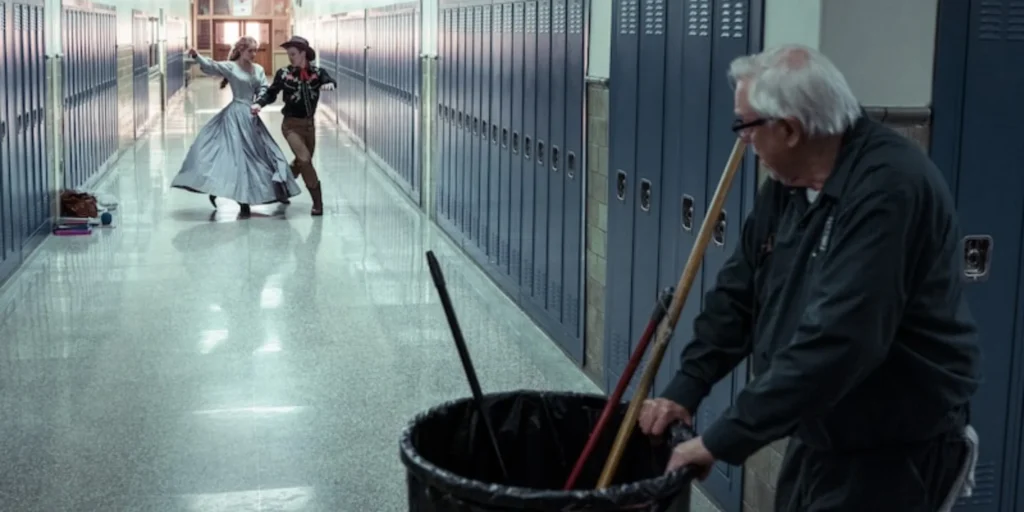
The biggest revelation about the I’m Thinking of Ending Things ending is that the whole story unfolds inside the mind of an aging janitor. Remember those short, seemingly random cuts to an older man cleaning a high school? That’s Jake. Or rather, Jake decades later.
The girlfriend, whether she’s Lucy, Louisa, Yvonne or Amy, isn’t real. She’s a patchwork of people Jake once met, admired from afar or imagined himself with. That’s why her name, job and even her personality keep shifting. She isn’t a person; she’s a memory and a fuzzy one at that.
Kaufman essentially builds an entire film out of the unreliable fragments of a lonely man’s mind. It’s messy, contradictory and deeply human.
The Girlfriend Who Isn’t There
One of the most disorienting parts of the movie is how the girlfriend seems to slip through identities like costumes. One moment she’s a poet, the next she’s a physicist. Sometimes she’s confident, sometimes insecure. She’s never stable because, in Jake’s memory, she never was stable. She wasn’t someone he truly knew.
That instability is the point. She’s the embodiment of Jake’s longing. She’s “the one who got away”, except she never really existed as “the one”. She’s a stand-in for missed chances, awkward encounters and what Jake wished his life had been.
Parents Aging on Fast-Forward
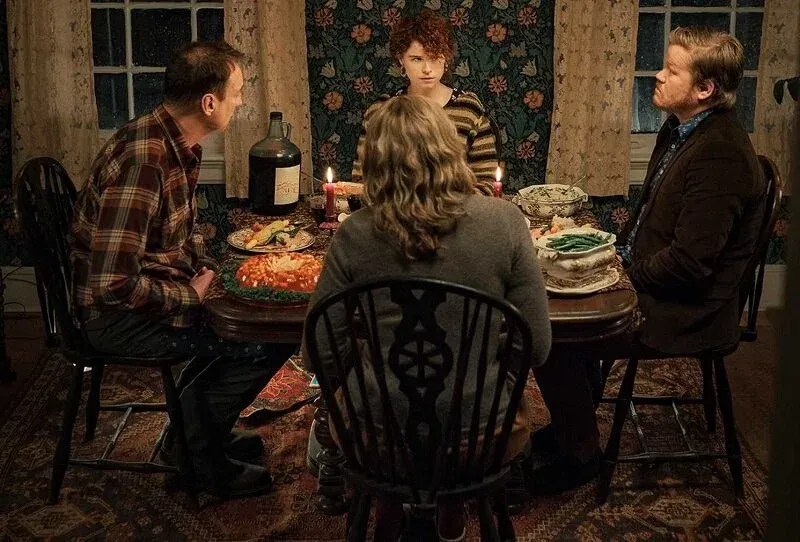
When Jake takes the girlfriend home to meet his parents, things get weird fast. His mom and dad age forward and backward within the same dinner. One scene they’re spry and bickering, the next they’re elderly and frail.
This time slip shows how Hake remembers them, not as fixed beings but as flashes of their whole lives. It’s memory skipping like a scratched record. He recalls them young, then sick, then gone. It’s heartbreaking, especially when you realize Jake is processing his grief through these warped visions.
Also, read The Curious Case of Benjamin Button Ending Explained: Time Runs Forward, Love Looks Back
The Pig and the Blizzard
Let’s talk about that pig. Yes, the animated pig with maggots in its belly that leads Jake through the high school halls in the final act. It’s as gross as it is symbolic.
The pig mirrors Jake’s own sense of decay. Just as the pig was left to die in filth, Jake sees his life as wasted and rotting from the inside out. The blizzard outside reflects the same truth, Jake is alone, frozen in time, trudging toward an end he can’t escape.
The Oklahoma! Moment
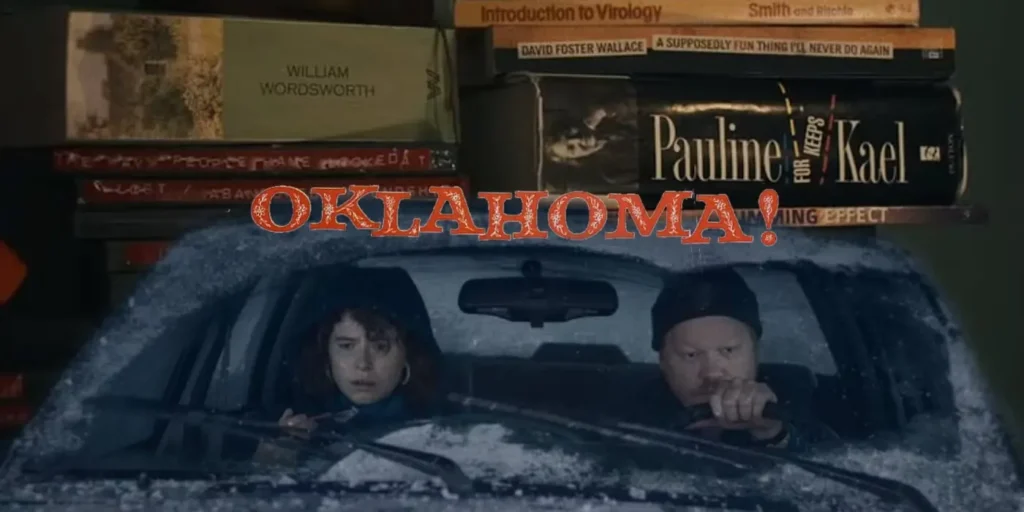
Just when you think the movie can’t get stranger, Jake breaks into a fantasy sequence straight out of a high school musical. Literally. He imagines himself onstage in Oklahoma!, singing “Lonely Room”, a song about desperation and yearning.
In his fantasy, the girlfriend is there too, applauding as the crowd gives him a standing ovation. It’s the life Jake never had: admired, loved, successful. It’s sweet on the surface, but if you peel it back, it’s unbearably sad. He’s not actually receiving applause. He’s imagining it as he dies.
The Ballet: Desire vs. Death
There’s also the ballet sequence, a surreal dance-off between Jake, the janitor and younger versions of himself and the girlfriend. It plays out like an interpretive struggle between love and morality. But, as with the rest of the film, death wins. The janitor’s reality crushes his fantasy.
It’s another way Kaufman underlines the film’s central tragedy. Jake wanted love, but loneliness is what defined his life.
The Final Scene: Running Toward Nothing
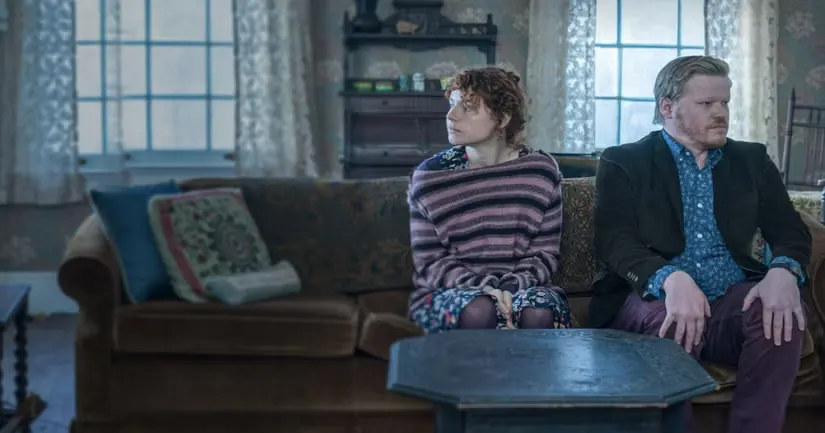
So what does the I’m Thinking of Ending Things ending really mean? In the last stretch, Jake strips down in the high school, shivering in the snow. He sees visions. He accepts a prize. He imagines one last audience clapping for him.
Then comes silence.
The implication is clear that Jake dies in the car in the blizzard. But he doesn’t die peacefully. He dies still yearning, still chasing a shadow of the life he wished he’d lived. His girlfriend’s final narration, about how she barely knew Jake at all, drives it home. She’s not real. She’s memory and memory is all he has left.
Also, read The Roses Ending Explained: Love, Laughter and a Boom
Why It Hurts So Much
The genius of I’m Thinking of Ending Things ending is that it’s not about “what’s real”. It’s about what it feels like to live with regret.
Jake is every person who stays too long in their own head. Every person who dreamed instead of acted. Every person who realized too late that life had passed them by.
That’s why the movie lingers long after the credits. It’s not just a puzzle to solve, it’s a mirror you don’t really want to look into.
Final Thoughts on I’m Thinking of Ending Things Ending
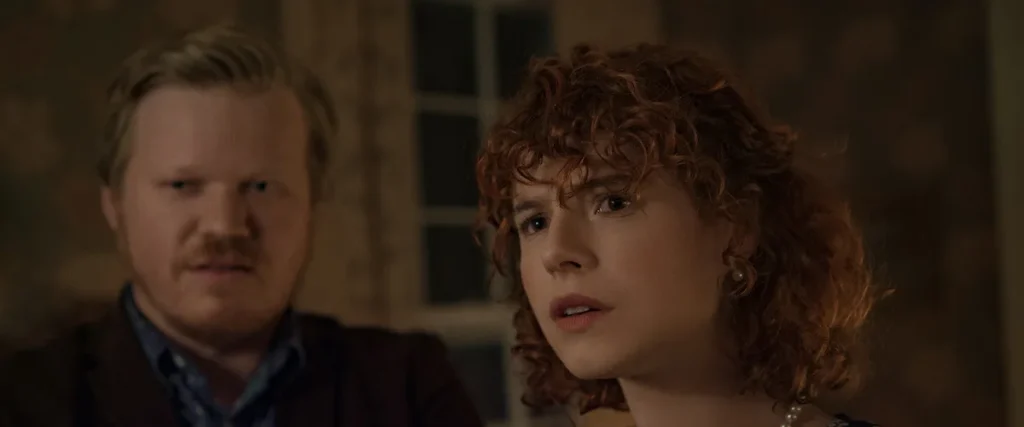
The I’m Thinking of Ending Things ending isn’t designed to make you feel good. It’s designed to make you feel seen. Kaufman takes loneliness, regret and the ache of “what if” and turns them into a cinematic snowstorm.
Sure, it’s confusing. Sure, it’s bleak. But it’s also one of the most haunting portraits of a human life we’ve seen in modern cinema.
And hey, if it leaves you baffled, don’t worry. That’s the whole point.
Frequently Asked Questions
1. Is the girlfriend real?
No. She’s a construct of Jake’s memory, shifting identities to reflect his idealizations and regrets.
2. Why does Jake’s family keep aging back and forth?
It reflects his fragmented memory of them, jumping across time as he recalls different stages of their lives.
3. What does the pig symbolize?
The pig represents decay and wasted life, mirroring Jake’s feelings about himself.
4. Does Jake die at the end?
Yes. The blizzard, the stripping, and the hallucinations all point to Jake freezing to death after giving in to despair.